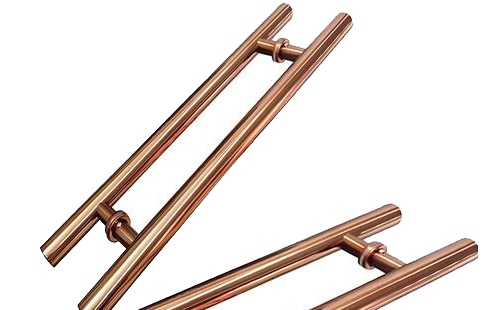The purpose of electroplating is to plate a metal coating on the substrate to change the surface properties or size of the substrate. Electroplating can enhance the corrosion resistance of metals, increase hardness, prevent abrasion, improve conductivity, smoothness, heat resistance and beautiful surface. Depending on the purpose of the coating and the electrochemical reaction between the coating and the substrate, the coating can be divided into many types.
Coating material
① Classification according to the purpose of the coating
The coating usually has two uses, namely: to give or improve the surface condition of the material, or to make the surface structure of the material have a certain function. Therefore, it can be generally divided into decorative, protective coating or functional coating.
1. Protective decorative coating
Corrosion, rust, etc. are the greatest threats to product life, which will not only damage the appearance, but also affect the function of the product. In addition to improving the appearance of the product, the general decorative coating can also play a protective role, such as chemical anti-corrosion and anti-rust, or mechanical anti-wear to reduce friction.
2. Functional coating
Functional coating mainly refers to those coatings that can make the surface of the material have a special function. Various new functional coatings can increase the surface hardness of the material, improve friction, reduce wear, improve electrical conductivity, reduce contact resistance, enhance magnetism, prevent diffusion and penetration, or repair worn parts.
②. Classification according to the electrochemical relationship between the coating and the substrate
According to the electrochemical relationship between the coating and the substrate, the coating can be divided into cathodic coating and anodic coating. The liveliness of the metal is different, which is also an important way to judge the type of coating.
1. Cathodic coating
The metal substrate of the cathodic coating is more active than the coating. Such a coating usually covers the substrate completely to protect the substrate. The typical ones are copper plating and nickel plating on steel. Since the cathodic coating only has a certain thickness, it has a protective effect on the substrate. Therefore, the coating thickness and porosity are required. Usually, a coating thickness gauge is used to control the thickness of the coating.
2. Anode coating
The plating metal of the anodic coating is more active than the substrate. When the coating encounters corrosive substances, the coating will corrode first, thereby protecting the substrate from corrosion. Typically, there is zinc plating on steel.
The above is the plating classification knowledge organized by the editor. If you want to know the coating thickness measurement method and the coating thickness gauge product, please click "How to use the coating thickness gauge to measure the coating thickness" for details.

